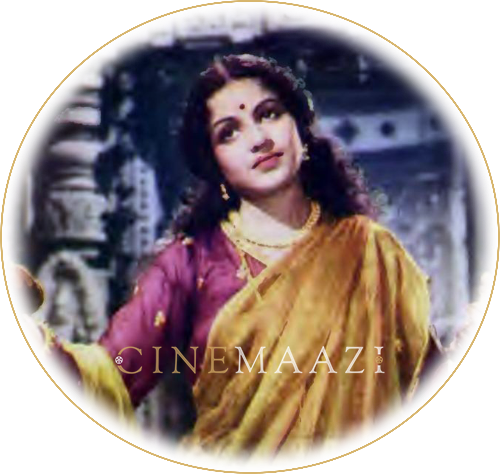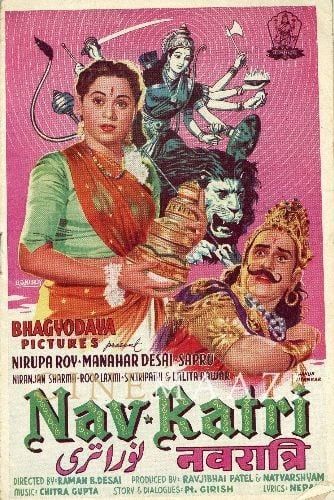M S Subbulakshmi

Subscribe to read full article
This section is for paid subscribers only. Our subscription is only $37/- for one full year.
You get unlimited access to all paid section and features on the website with this subscription.
Not ready for a full subscription?
You can access this article for $2 , and have it saved to your account for one year.
- Born: 16 September 1916 (Madurai, Tamil Nadu)
- Died: 11 December 2004
- Primary Cinema: Tamil
- Spouse: Thaigaraja Sadasivam
Described by Ustad Bade Ghulam Ali Khan as ‘Suswara Lakshmi’- the goddess of melodious voice, and also celebrated as India’s nightingale of Carnatic music, M S Subbulakshmi (Madurai Shanmukhavadivu Subbulakshmi) was a noted Carnatic singer and actress from Madurai, Tamil Nadu. Starting her career by singing in temples, she would go on to become one of the best-known artistes in her field during her lifetime. A renowned vocalist, she immortalised many songs, including Vaishnava janatho, a favourite of Mahatma Gandhi, Meera bhajans, and Annamacharya kirtans. She had also acted in a few Tamil films in her youth. Her first film Sevasadanam, which released in 1938, was followed by Shakunthalai (1940), Savithri (1941) and Meera (1945). She had the rare honour of rendering songs penned by Chandrasekerandra Saraswati, the 69th pontiff of the Kanchi Mutt, and the first and last Indian governor general of India, C Rajagopalachari, praying for world peace. Hailed by former PM Jawaharlal Nehru as the 'Queen of songs', poet Sarojini Naidu gave her, her own 'Nightingale of India' title. Performing across the globe, including the United Kingdom, the erstwhile USSR, the USA and France, she took the ancient, south-Indian tradition of Carnatic music well beyond its select audience. Invited to perform at a concert before the UN General Assembly in 1966, she held the audience, which included many heads of state, spellbound. The first woman to be honoured with the 'Sangitha Kalanidhi' by the Madras Music Academy—a title that is considered a dream of every Carnatic musician—she was also the first musician ever to be awarded India's highest civilian honour - the Bharat Ratna, as well as the first Indian musician to receive the Ramon Magsaysay award; incidentally, she donated her entire prize money to several welfare schemes.
Born on 16 September 1916, in Madurai, Tamil Nadu, her father Subramania Iyer was a practicing advocate and her mother Shanmuga Vadivu, a veena player. Affectionately called Kunjamma at home, she showed an early aptitude for vocal music. Trained initially by her mother, she was intrigued by gramophone records, and would roll a piece of paper and sing into it for hours. She was just eight when she gave her earliest public performance—a Marathi bhajan. Story goes that she had accompanied her mother to a veena recital and was playing in the sand outside the music arena. Her mother spontaneously announced that Subbulakshmi would perform a song—she did with unwavering confidence, holding the audience enthralled. This would be the earliest indication of the heights she would reach in the future.
Cutting her first disc at the age of 10, she rendered the songs Maragatavadivu and Oothukuzhiyinile in an extremely high pitch. Even before she entered her teens, she was noticed in Chennai through the Columbia Gramophone Company records.
Working hard to improve her diction, and comprehend the layers of meaning of the composition, she would spend months memorising Sanskrit texts. This trait was to continue for the rest of her life, and even in her seventies, she would learn new songs and record them. As she once wrote, “Music is an ocean and I am a student. For a vocalist, voice practice is important. It has been my habit to learn the meaning of songs I have to sing and the correct pronunciation of each word.”
She was 16 when she was called to substitute at the Madras Music Academy programme for the great singer Ariyakkudi Ramanuja Aiyangar, who was unable to attend. The year was 1932, and she performed before leading virtuosos of Carnatic vocal and instrumental music including T N Rajarathinam Pillai, Chembai Vaidyanatha Bhagavathar and Mysore T Chowdiah. She would mesmerise all with her performance, even earning the compliment that she possessed a veena in her throat! She would also have the honour of being the first female performer at the Madras Music Academy annual conference.
Moving to Madras in 1936, she took the plunge into films, making her acting debut in the critically applauded and commercially successful Sevasadanam which released on 2 May 1938. This drama film was one of the early Tamil films to be set in a contemporary social setting and to advocate reformist social policies. Adapted from Premchand's novel Bazaar-e-Husn, she played an abused wife Sumathi who is driven out of her house by husband and later forced into prostitution. She eventually reforms her ways and devotes her life to running an institution for the children of prostitutes. F G Natesa Iyer was the lead actor opposite her in this film, directed by K Subramanyam.
She went on to act in Shakuntalai (1940), the Ellis Dungan directorial about the eponymous mythological queen, whose tale is told in the Mahabharata and dramatised by Kalidasa in the play Abhijnanasakuntalam. The film, which she produced, was a hit, and her songs were widely praised.
In July 1940, she married freedom fighter and journalist Thaigaraja Sadasivam (1902-1997), who was senior to her by 14 years. Their union, which lasted 57 years, was also fruitful in terms of service to music, arts and literature.
Interestingly, she played the male role of Narada in her next film Savitri, which was released in 1942, with Bombay film star Shanta Apte essaying Savitri. The film did extremely well at the box office, and the profits earned were channeled by Sadasivam to start the nationalist Tamil weekly Kalki, which played a key role in enhancing Subbulakshmi’s image as a 'saintly musician'.
When Sadasivam started looking for a good story to produce a film that would make available his singer wife Subbulakshmi's music to the average person, Subbulakshmi chose the story of Mirabai, the 16th century mystic and poet. While production of the film began at Newtone Studio in Madras, it was filmed predominantly on location in North India on locations in Jaipur, Vrindavan, Udaipur, Chittor and Dwarka in the interests of credibility and historical accuracy. The Tamil language Meera, which released in 1945, was directed by Ellis R Dungan and written by Kalki Krishnamurthy. It starred Subbulakshmi as Meera, the zealous devotee of Krishna, who considers him to be her husband. Despite marrying the Rana (Chittoor Nagayya), she follows her own way of living, which is unacceptable to her husband and his family. Such was Subbulakshmi’s involvement with the role she was essaying that during the shooting at Dwarka, onlookers considered her Mirabai incarnate. The director reportedly declared that ‘she did not act as Mirabai, but changed her soul to her being’. With Meera, Sadasivam succeeded in bringing the magic of Subbulakshmi’s bhajans to a vast swathe of listeners.
Released on 3 November that year, Diwali day, the film became widely successful, running for more than 25 weeks. It also led to the production of a Hindi-dubbed version. The new version, for which a few scenes were also re-shot, released two years later in 1947. It was also to achieve success, bringing Subbulakshmi national fame. At the screening at Plaza theatre, New Delhi on 5 December, the audience comprised eminent personalities such as Lord Mountbatten, Lady Edwina Mountbatten, Jawaharlal Nehru, R K Shanmugam (finance minister) and Sarojini Naidu. After watching the film, Naidu reportedly declared that she was happily surrendering to Subbulakshmi the title ‘Nightingale of India’, which she, as a poetess, had long held. Mahatma Gandhi himself became an admirer of her voice after she rendered bhajans at Sevagram, Wardha.
Meera was to be her last acting assignment as thereafter Subbulakshmi chose to focus only on her music career. She was encouraged by her husband Sadasivam, who desired that she go beyond being a provincial musical figure and gain national acclaim. In 1943 she had participated in the Mumbai Vikramaditya festival, where her renditions of raga Sankarabharanam, as well as bhajans by Tulsidas, Mira Bai, and Guru Nanak won over the audience completely.
Her devotional songs soon captured the imagination of people across the length and breadth of India. Innumerable connoisseurs swore that the compositions of Mirabai, Kabir or Tulsidas were best done justice only by Subbulakshmi. Above all, she remained deeply immersed in the devotional music of Saint Thyagaraja. Her rendition of Saroja dhala nethri saama gaana vinodhini in Sankarbharanam raga was considered beyond description, while her Subbulakshmi mela ragamaliga composed in 72 ragas was considered nothing short of divine.
Having first sung bhajans for Mahatma Gandhi in 1941, three years later, she performed five concerts to raise funds for the Kasturba Memorial Trust. Her rendition of Hari thumo haro would be played by All India Radio after Gandhi's death in 1948. Living life with the motto – earn to give, early in the 1940s, she began conducting benefit performances to fund a range of social and religious causes.
Playing a key role in disseminating the concepts and complexities of Carnatic music to the Western world, her tours across the world included a series of 22 fundraising concerts held across the US, a concert at the prestigious Carnegie Hall, the inaugural concert at the festival of India in London in 1982, her trip to Manila for the Magsaysay award, and her concert in front of Russian musicians and musicologists in 1988.
After the demise of her husband in 1997, she stopped singing, her life clouded by the end of their 57 years of companionship.
M S Subbulakshmi passed away on 11 December 2004 at the age of 88 in Chennai. She remains memorable for mesmerising audiences in India and abroad with her music, as well as for her humility and deep compassion for the poor.
-
Filmography (3)
SortRole
-

Meera 1945
-

Sakuntalai 1940
-








.jpg)



